#olaf ii haraldsson
Text

Olaf at London Bridge — English School (20th century)
#olaf#london#london bridge#england#viking age#anglo saxon#norway#norwegian#danes#ethelred the unready#snorri sturluson#heimskringla#history#art#drakkar#viking#vikings#middle ages#medieval#europe#olaf ii haraldsson#olav haraldsson#olaf haraldsson#ships#ship#sagas#nordic#norse#european
80 notes
·
View notes
Photo

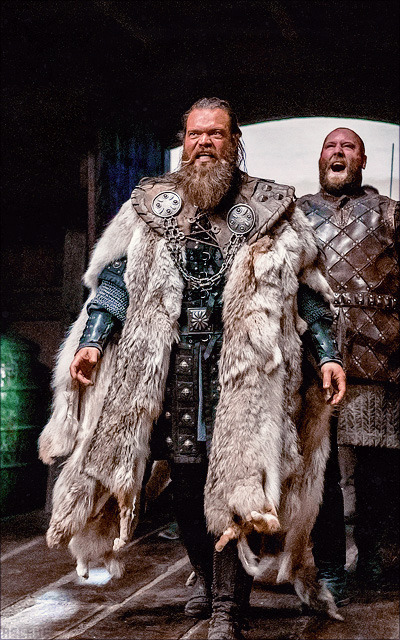
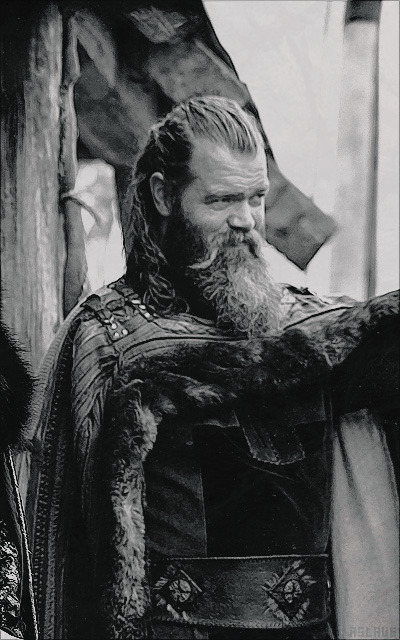

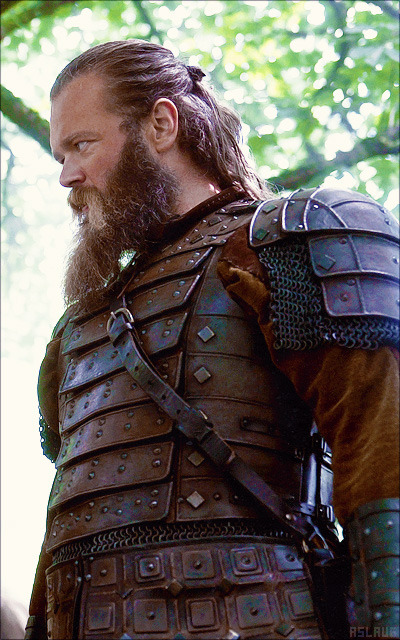




Jóhannes Haukur Jóhannesson in Vikings: Valhalla (s1-2) as Jarl Olaf Haraldsson
#johannes haukur johannesson avatars#vikingsedit#vikingsvalhallaedit#period fc#johanneshaukurjohannessonedit#jarl olaf#olaf haraldsson#olaf ii of norway#johannes haukur johannesson#vikings valhalla#rp avatars#avatars 400*640#rpg resource#*avatars#*mine
20 notes
·
View notes
Photo










List of the kings of Norway (II)
#Olaf II#Olaf II Haraldsson#Canut the Great#Knútr#Cnut the Great#Sweyn Knutsson#Haakon Ericsson#Magnus Olafsson#Magnus I#Harald Hardrada#Harald III#Harald Sigurdsson#Magnus II#Olaf III#Haakon Magnusson#Magnus III#Magnus Barefoot
22 notes
·
View notes
Text
The Saxon Pride

Pairing: None
OC: None
Warnings: Death by poisoning
Words: 1k6

Gazing out over the foggy horizon of England, you paid no attention to the lamentations of your father's advisors as they almost begged you to abandon the family castle and make your way to London for safety. Like the Great Heathen Army of Ragnar Lothbrok's sons, King Canute's army had anchored on the shores of Britain in a desire for revenge.
After the death of King Æthelred II, known as the Unready, your father, as one of the most powerful men in the kingdom, had to travel to London to greet the new king.
"My lady, it is still time for you to leave." One of your father's old advisors said to you with a worried expression on his face. Not answering at first, you sighed deeply before moving closer to the small crowd of men gathered for the sole purpose of getting you to agree to go to the new king's castle in London. Taking a seat in your father's chair, you finally gave your opinion on the subject.
"I have no desire to leave the castle of my peers, it is our heritage and the centerpiece of power that my ancestors transmitted to my father all those years ago."
"But, my lady..." one of them tried an umpteenth and final attempt to change your mind, in vain.
One of your father's old advisors said to you with a worried expression on his face. Not answering at first, you sighed deeply before moving closer to the small crowd of men gathered for the sole purpose of getting you to agree to go to the new king's castle in London. Taking a seat in your father's chair, you finally gave your opinion on the subject.
"I have no desire to leave the castle of my peers, it is our heritage and the centerpiece of power that my ancestors transmitted to my father all those years ago."
"But, my lady..." one of them tried an umpteenth and final attempt to change your mind, in vain.
"As my father has ordered you, it is your duty to accompany my brothers to London and bring them to safety. After that, if you are as brave as the people here hope, you will return to keep company to our guests from beyond the sea."
Ending the meeting, your father's advisors were quick to leave the city under threat of Viking attack, however, they had held up part of their end of the bargain and took your brothers with them. Your plan was clear, risky but still achievable. You went to the courtyard of the castle to reach a set of small houses, relatively banal from the outside. There, sitting on wooden logs, a small crowd had been gathered at your request. In all humility, you addressed them.
"As you probably know, Vikings are on their way to attack London and take England. After the disastrous events of St. Brice's Day, my father opened the gates of his castle to you, bravely failing to inform the king. He could have killed you but he didn't. Offering you a great favor, it is now my turn to ask you to do something for us, for me." In 1002, a few days after the St. Brice's Day massacre which had seen the extermination of a large part of the Norwegian, Danish and Swedish populations of the Danelaw, the few surviving families had tried to find refuge in the neighboring villages. Many of them were denounced, but all those who came to your father's castle were much luckier. Years before, a Norwegian had saved his life on a battlefield during a reconquest by King Æthelred, so it was as a gesture of thanks, and to pay off his debt, that the few surviving Vikings were allowed to settle under his protection.
Gathered behind the great gates of the enclosure, your eyes were closed, silently praying to the Lord to bring about what you had wished to do. As the sound of horses' hooves galloping toward the castle and the cries of the Northmen became more and more audible from where you stood, you finally ordered the gates to be opened.
Standing up straight, hands joined in front of you, your heart began to beat like it never had before as you could see the horde of Vikings approaching closer and closer in the distance. Taking your courage in both hands, you moved forward to meet them, not too far from the castle walls but far enough that you could no longer be protected by the soldiers inside. There, alone, the light breeze that heralded the coming storm made your hair flutter. Taking a deep breath, you tried not to show your fear and waited for the enemy to come to you.
King Canute stopped his troops a few feet away from you, seeing him frown, you didn't back down. There you signaled to the foreigners living under your father's protection to come and meet their king. The tense atmosphere, coupled with the expectation of Canute's verdict, made the situation almost frightening. Emerging from the inner courtyard, the few families came up behind you, solemnly, as if they were going to be ransomed. Without meaning to, your hands began to tremble and the tension you were putting on to keep it from showing whitened your knuckles.
Everything happened in a fraction of a second, recognizing among the survivors some of their family members, some Vikings put down their weapons with the sole purpose of finding their relatives. King Canute quickly understood what it was all about and especially what you had done. Against all odds, he accepted your offer to enter the castle without using weapons.
Sitting at the banquet table set up, especially for the occasion, you found yourself seated at the end of it next to the king of the Danes. Although peaceful, the atmosphere was still tense.
"If I may ask, why did you let Vikings on your land when the king forbade you to do so?"
Asking for more wine, you avoided the king's gaze for fear of triggering an unwanted reaction. Straightening in your seat, you waited a few seconds before answering.
"Many years ago, my father fought alongside the king with other Vikings against Northmen who had come to claim land that was not theirs. As the battle raged on, and the mist enveloped the battle area, my father was nearly pierced by a Norse axe. Having managed to anticipate the blow, one of your men stepped between the weapon and the chest of the owner of this castle, allowing my father to live longer." Pausing for a moment, you stood up, moving to the window from which you saw Vikings threatening Saxon villagers.
"Finding himself here on St. Brice's night and remembering his debt, my progenitor opened his doors to the Vikings who were fleeing the king's men. They remained hidden inside the castle for several weeks before being offered the opportunity to work for the ealdorman in exchange for protection."
Returning to your place around the table, you noticed that Olaf had begun to smell his glass as if there was a particular odor from the wine being served.
"Your drink is not poisoned, it would be foolish of me to kill a Viking in the middle of a banquet." Still not convinced by your words, he asked why he should trust you.
"If you die, I die." After letting out a long sigh, Olaf shrugged his shoulders and swallowed his drink without further ado. While you were talking, learning about Canute's plans and he was learning about London and its surroundings, footsteps were heard in the main hallway. Suddenly, the door burst open to reveal three angry Vikings. One of them was holding a Saxon by the collar, whose face you didn't know. Simultaneously, you and the king stood up, eyebrows furrowed, trying to figure out what this was all about. One of the men spoke in his native language, preventing you from participating. Not wanting to leave you out, and especially because it was your castle, the king turned to you before making some semblance of a translation.
"This man claims to be a messenger from London." Taking on a concerned expression, you approached the man before listening to what he had to say. Your father had sent him, little King Edmund was to be crowned shortly so his stay in London would be extended. Thanking him warmly, you put your hand on his back before fetching your glass and handing it to him.
"After such a long trip, you've earned some comfort." Taking your glass back after it emptied into the traveler's gullet, you returned to your seat as he waited for a response from you. Sighing deeply, your eyes did not leave the man standing in front of you.
After a few minutes, his behavior changed slightly. He began to hold his stomach before demanding to drink again because of a burning sensation that had invaded both his mouth and throat. Staggering to the nearest table, he swallowed the contents of a decanter, but it did not help his condition. Still watching him from your seat, you spoke up, not seeming concerned about what was happening.
"There's your message for my father, the people of London don't need to know that the Vikings have been here." No sooner had you finished speaking than the poor messenger collapsed to the ground, convulsing, his mouth salivating profusely before his soul joined the lord. Almost shocked by what had just happened, Olaf gave you a look that was half questioning and half surprised. Then you smiled at him before winking.
"Your drink wasn't poisoned, but mine was."

#vikings valhalla#king canute#olaf haraldsson#vikings valhalla imagine#vikings valhalla imagines#king edmund#king aethelred II
40 notes
·
View notes
Photo

‘Vikingos: Valhalla’
Europa, siglo XI. Las hazañas de Ragnar Lothbrok ya son solo leyendas. 100 años después de sus memorables proezas, los vikingos están repartidos por el territorio, especialmente en Inglaterra. El rey inglés Etelredo II ve una amenaza para los sajones en el avance de estos asentamientos y los extermina masivamente con la Masacre del Día de San Bricio.
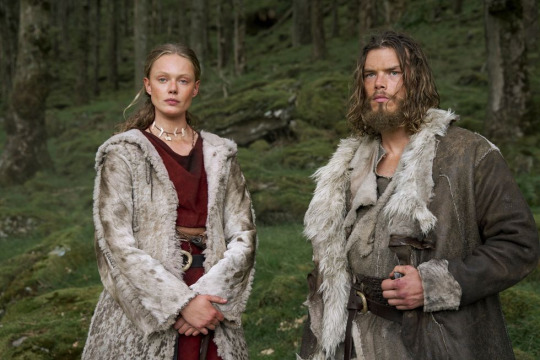
Con esta premisa arranca Vikingos: Valhalla, el spin-off de la aclamada “Vikingos”, estrenado en Netflix el 25 de febrero. La nueva aventura nace de la venganza, un concepto que siempre movió e impulsó a estos guerreros. Una venganza contra los ingleses, pero que también crece dentro de las filas vikingas, desatando una enorme guerra civil.
Una primera temporada de ocho capítulos con los que Jeb Stuart recoge el testigo de Michael Hirst y nos vuelve a introducir en este universo lleno de aventuras, luchas sanguinarias, amor, saqueos y referencias históricas.

Un fuerte punto a destacar de este esperado spin-off, y que lo diferencia de la serie original, es que desde un principio nos ofrece una historia y unos protagonistas de los cuales no podemos apartar la atención. Si en “Vikingos” algunos tuvieron que esperar varios capítulos o incluso temporadas para adentrarse en la trama o encariñarse con algún personaje, Vikingos: Valhalla no peca de falta de ritmo ni de no tocar corazones.
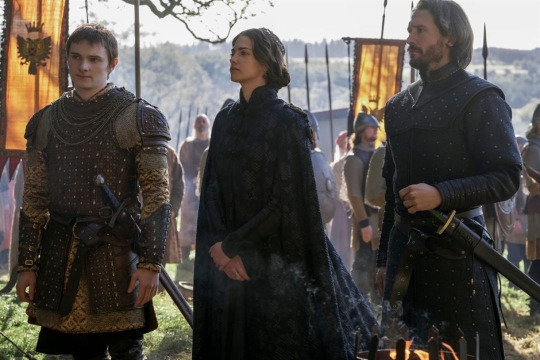
Prueba de ello son el grupo de groenlandeses, liderados por los hermanos Leif Eriksson (Sam Corlett) y Freydis Eriksdotter (Frida Gustavsson). Fieles, humanos, devotos de las antiguas tradiciones religiosas, acuden a Kattegat únicamente para vengar a Freydis y acaban quedándose para salvar a todo el pueblo vikingo. Inolvidable también el dúo que forman Leif y el príncipe Harald Hardrada (Leo Suter), dos hombres muy distintos pero con una visión común de paz y hermandad entre los suyos que nos regalan tanto momentos emocionantes como cómicos a lo largo de los diferentes episodios.

Demostrando una vez más, como en Vikingos, que ni los buenos son tan buenos ni los malos son tan malos, también resultan fascinantes los personajes más ambiciosos y despiadados como el rey Canuto (Bradley Freegard), a quien se le echa de menos en los últimos capítulos) o Godwin (David Oakes) por la manera en la que están construidos, las razones por las que se mueven y la humanidad e inteligencia que muestran en sus acciones.
La primera temporada de Vikingos: Valhalla se vertebra en torno a dos grandes conflictos: el de los vikingos contra los ingleses (que ya conocíamos) y el nuevo que se crea dentro del pueblo escandinavo al haber cada vez más conversos al cristianismo entre sus miembros.

Dos grandes batallas son el resultado último de ellos. La primera tiene lugar en Londres, en unas inolvidables secuencias en las que una vez más los vikingos hacen gala de su inteligencia y sus múltiples métodos de saqueo y conquista, tanto físicos como mentales.
Si ya Vikingos nos sorprendía temporada a temporada con nuevas estrategias de usurpación de nuevos territorios, su spin-off no ha querido ser menos: desde la infiltración de dos de ellos entre los ingleses por unas horas o la manipulación del rey Edmundo (Louis Davison), hasta las espectaculares secuencias en torno al puente de la ciudad y su posterior caída con unos efectos especiales de gran nivel.

La segunda batalla se desarrolla en Kattegat, esa ciudad a la que vimos tantas veces en la ficción original y que ha prosperado con los años hasta convertirse en un enclave comerciante de referencia para los vikingos. Esta vez, Leif y compañía ayudarán a la condesa Haakon (Caroline Henderson) a defender la ciudad en contra del fiero ataque del conde Kare (Asbjørn Krogh Nissen), exterminador de vikingos paganos, y Olaf Haraldsson (Jóhannes Jóhannesson), un cristiano que solo se mueve por intereses personales.
Una vez más, vemos como las traiciones y cambios de bando siguen desarrollándose entre las filas vikingas. Aunque aparentemente tengan un enemigo común, el anhelo de poder y las desavenencias religiosas hace que sigan matándose entre ellos en luchas sanguinarias tan bien ejecutadas como la de Freidys y sus amigos contra uno de los hombres de Kare. Dos minutos de combate perfectamente coreografiado, con el que la ficción sorprende y mantiene al espectador con el corazón en un puño.

Si bien era de esperar que “Vikingos: Valhalla” presentara elementos en común con su predecesora, ya que además fue encargada para “percibirse con nostalgia”, las referencias a la serie original son constantes. Desde las menciones a Ragnar Lothbrok y sus hijos Björn Ironside e Ivar el Deshuesado o la presentación de la reina Emma de Normandía (Laura Berlin) como descendiente de Rollo, hasta las similitudes de sus personajes con los de la precuela: Freidys convirtiéndose en una doncella escudera tal y como lo fue Lagertha o el conde Kare obsesionado con Cristo del mismo modo en el que lo estaba Floki con Odín o Thor son algunos de los ejemplos.
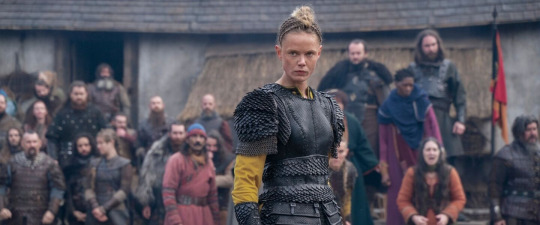
Mi visión personal es que han transcurrido 100 años y encuentro a unos vikingos bien peinados, vestidos y nada salvajes ... nada que ver con Ragnar Lothbrok, se preocupan demasiado de la apariencia física cuando todos sabemos que los vikingos eran verdaderos bárbaros por muchos siglos que pasaran ... la serie no está mal, pero no termina de engancharme, hay personajes a los que no consigo encontrar su rol en la serie.
youtube
8 notes
·
View notes
Photo
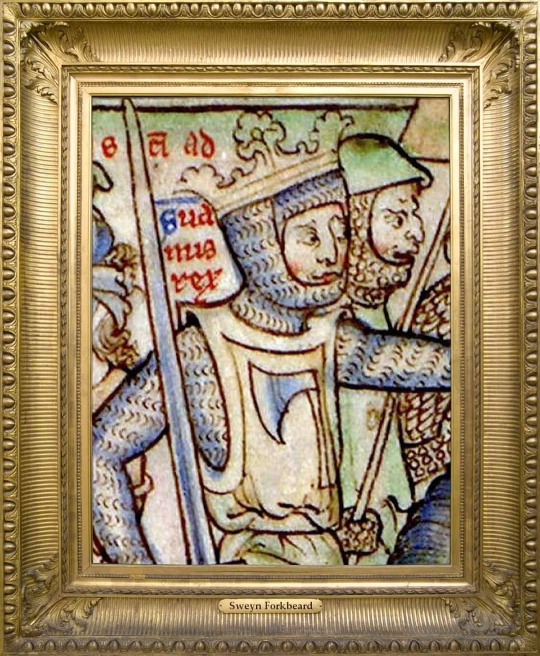
Sweyn Forkbeard
Old Norse: Sveinn Haraldsson tjúguskegg; Danish: Svend Tveskæg
.
king of Denmark from 986 to 1014.
.
King of Norway: 986–995 & 1000–1014.
.
King of the English: 1013–1014
.
Born: c. 960, Denmark
Parents: Harald “Bluetooth” Gormsson (Old Norse: Haraldr Gormsson; Danish: Harald Blåtand Gormsen, died c. 985/86),king of Denmark & Norway.by either Gunhild or Tove.
.
House of: Denmark
.
Marriages & children;
.
The sources about the wife or wives of Sweyn are contradictory, but the two names we have are;
.
(1.) Sigrid the Haughty
(2.) Gunhild of Wenden
.
Children from these marriages are;
.
Harald II of Denmark (c. 996–998 − c. 1018)
Cnut the Great
Estrid Svendsdatter (990/997 – 1057/1073)
Gytha
Gunnhild
Santslaue
Thyra
.
Died: 3 February 1014 (aged 53-54), Gainsborough, Lincolnshire, England
Burial: Roskilde Cathedral or St. Trinity in Lund.
.
Successor:
As king of Denmark: Harald II of Denmark (eldest son)
King of Norway: Olaf II of Norway
King of England: Æthelred the Unready.
.
.
.
#kingsandqueensofgreatbritain #kingsandqueens #Monarchy #RoyalHistory #Royalty #Royals #Portraitpainting #historyinpictures #Britishhistory #BritishMonarchy #Monarch #EnglishHistory #EnglishMonarchy #Medievalhistory #Danes #Medievaltimes #HistoryFacts #medieval #MedievalEngland #Anglosaxons #Anglosaxon #kingoftheEnglish #Sweyn #SweynForkbeard #Vikings #KingofDenmark #Kingofnorway (at London, United Kingdom)
https://www.instagram.com/p/CRowEolM0mm/?utm_medium=tumblr
#kingsandqueensofgreatbritain#kingsandqueens#monarchy#royalhistory#royalty#royals#portraitpainting#historyinpictures#britishhistory#britishmonarchy#monarch#englishhistory#englishmonarchy#medievalhistory#danes#medievaltimes#historyfacts#medieval#medievalengland#anglosaxons#anglosaxon#kingoftheenglish#sweyn#sweynforkbeard#vikings#kingofdenmark#kingofnorway
3 notes
·
View notes
Text
Egy vasárnap margójára...
😵 😅 Ma ugyanúgy voltam a városban, Myllyjärvi-ből (Millijervi) indultam, ahol lakom. Kb. 55 perc volt mire eljutottam egy nagyon cuki helyre, a Saint Olaf Church -be.
II. Olaf Haraldsson vagy Szent Olaf (norvégül Olav Haraldsson vagy Olav den hellige), (995 nyara[2] – 1030. július 29.[3][4]) Norvégia királya volt 1015 és 1028 között, 1164-ben az ország védőszentjévé nyilvánították[5] (ünnepe július 29.[6]); 12 évre megszakította a dánok uralmát. Óészaki nyelven eredetileg az Óláfr nevet kapta. A mai norvég nyelvben ennek megfelelője Olav, amit régebben gyakran Olafnak írtak. izlandiul a neve Ólafur, dánul Oluf, svédül Olof. Az Olafr hinn helgi, Olavus rex (latin és Olaf neveket egymással kicserélhetően használták (lásd Snorri Sturluson Heimskringla című királysagáját (1225). A 13. század óta néha úgy is emlegetik mint Rex Perpetuum Norvegiæ, azaz „Norvégia örökös királyát". A dán Helsingør neki szentelt katedrálisának neve Sankt Olai kirke, vagyis "Szent Olaf templom".
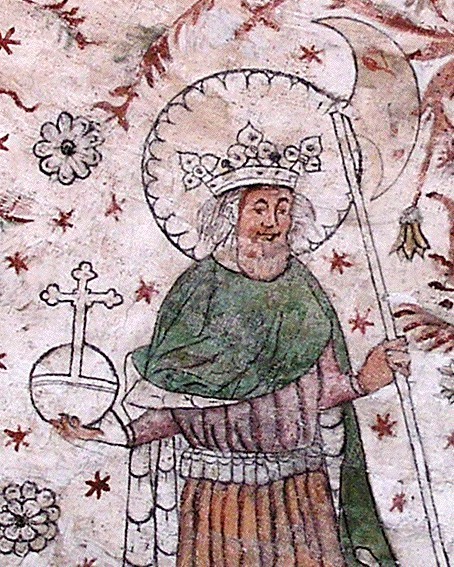
Már csak egy kérdésem van: miért norvég királyról lett elnevezve? 🤔 Abban bizonyos voltam, hogy a finnek igencsak szoros kapcsolatot ápolnak a svédekkel, ami nem csak abban mutatkozik meg, a kolim felszerelése fele IKEA-s termékből áll, kezdve az ágyneműkkel és a tipikus evőeszközökkel, hanem mert amúgy kb. minden ki van írva svédül is. Úgyhogy nem tudom, hogy ez az elnevezés pontosan hogyan is jött, de nagyon cuki, mindig az a hóember jut az eszembe a Jégvarázs című filmből amit amúgy nem is láttam, mert elkezdtem nézni és nem tetszett, ezért kikapcsoltam. 😅 😆 Lelki szemeimmel látom, hogy most hogyan veszettem el lelkes olvasóim 80 százalékát, de köszönet azoknak akik továbbra is itt maradtak. 😁
Szóval voltam misén. (Angol misén.:D) A vallási adatokat tekintve Finnországban a populáció többsége protestáns, és ezen belül is evangélikus. Csak egy kis százaléka van, akik római katolikusnak tartja magát, illetve orosz hatás miatt az ortodoxok száma is viszonylag nagy.
Remélem mindenki kultúrsokkot kapott! De amúgy szerintem igenis fontos ezeket tudni, meg hogy amúgy hol van egyáltalán Finnország pontosan, tudtad, hogy északról Norvégia határolja? :O Nem tudom kinek milyen volt a középiskolás földrajztudása, és az órák többségében inkább németeztem,ennek ellenére fontosnak tartom, hogy tisztában legyetek Ti, kedves olvasók, hogy most hogyan is állunk itten a “nagy északi területekkel”.
“És most biztos mindenki serényen rákeres a Google maps-en, hogy miről is beszélek...” Áh, erre lehet, hogy én is lusta lennék, inkább beteszem nektek ide:
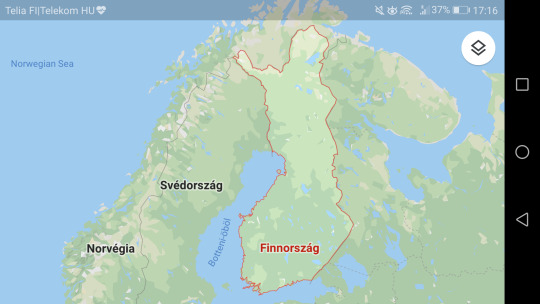
No szóval hol is tartottam? Igen, a mise: szóval nem voltak annyira sokan, de baromi jó volt látni, ahogyan a sokfélén kinéző, tök más kultúrából érkező emberek angol nyelven összegyűlnek egy órácskára, hogy az egyik legnagyobb dologban, a misébeN részt vegyenek. Aztán invitáltak mindenféle beszélgetéses kávézásos történetbe, de inkább eljöttem, mert vásárolnom kellett a Lidlben. xD 😁 Lol, hát nem izgalmas? Találkoztam a buszon azzal a két sráccal, akik szintén ott voltak, Jacobbal (származási hely: Csehország) és Stefanoval (aki pedig Itália területéről röpült ide) és kiderült, hogy ugyanott lakunk. Tökre megörültem, hogy vannak még rajtam kívül olynanok, akiknek ez fontos. Gondoltam letámadom őket, hogy gyorsan adjanak pivo-t (lásd: sör) és Tortellinit (lásd: tortellini) de nem akartam rögtön megcsillogtatni a körülbelül egy-egy kifejezésre redukálható tudásomat a kultúrájukkal kapcsolatban. Majd legközelebb... 😁 😁 (A pizzát direkt nem mondtam, azt tuti Stefano is unja már...)
Vásárlás
Hűha, kb 30 Eurót költöttem úgy, hogy egy pár napnyi kaját vettem. A Lidl-ben vásároltam, ahol teljesen tökéletesen más termékek vannak, mint nálunk. Bár otthon nem szoktam a Lidlben vásárolni, de az tuti fix, hogy nem sűrűn vannak finn termékek....A tipikus finn kaják általában rohadtul ízetlenek, ezt egész könnyedséggel kijelenthetem. Az édességeik amúgy finomak, a tejtermékekben is az élen járnak, ha nem láttam vagy ötszáz féle krémsajtot, akkor egyet sem. Egy dologban viszont kegyetlenül alulteljesítenek: a túró.
Jójó, persze, nem várhatom el, hogy finom friss magyar túrót tudjak beszerezni, sőt az furcsa is lenne, de hát milyen szegényes az összes bolt, anélkül a piros pöttyös finomság nélkül, amit a mi édes otthonunk, Magyarország kínál:
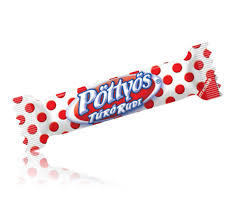
Most elkezdtem nézegetni, hogy milyen izűek is vannak már, epres meg barackos, meg...majom ízű?? De most komolyan, ahogy a fejemben megjelent ez a kifejezés egyből felnevettem aztán csekkoltam, hogy az banános. Huh 😅
Már megijedtem, hogy hova jutottunk el...megmutatom nektek ezt a képet: :D

Nos hát, hogy mennyiért is vásároltam? Kb. 30 Euró, az alapcuccok, meg néhány ehetetlen dolog. Ezt pl. azért vettem meg, mert nagyon kapós volt a vásárlók között, már csak kb. 15 darab volt belőle, úgyhogy gondoltam “nagy lábon élünk” és vettem hatot. (Micsoda szociálpszichológiai tesztalany lehettem volna egy jól kivitelezett standardizált kísérletben, de hát c’est la vie.)
Szóval a külső nyomás hatására gondoltam kipróbálom a dolgot, elég jól nézett ki, valami pudingos izénak (helyesbítek, izének) tűnt. (Általában helytelenül szoktam ezt a szót használni ami miatt a sógorom mindig kijavít, úgyhogy ha olvasod, kérlek, légy rám büszke! 🤗 🤗 xd)

FIGYELEM: ÁTVERÉS AZ EGÉSZ, NE VEGYETEK ILYET, NEM PUDINGOS. Nincs semmilyen íze, egyszerűen...huh, kirázott tőle a hideg. A külseje ellenállhatatlan kinézetűvé varázsolja, de ha megízleled...komolyan, az alja, az a teljes kiőrlésű cucc lucerna ízű, a teteje pedig valami cottage cheese, ami az itteni “túró”, de ilyet vétek lenne mondani, ezért inkább azt mondom, hogy gyatra mozzarella. :D Úgyhogy inkább felturbóztam szalámival meg sóval:

Ma sikerült kb. 7,5 kilométert gyalogolnom, amúgy 12 lett volna, csak visszafele inkább busszal jöttem. :D Igazából a finnek sok édességet esznek, gumicukor mániások, de ezt le is dolgozzák...gyaloglással meg biciklizéssel. Mindenki csinálja mindkettőt. A járdák meg elképesztően szélesek 3 méter biztosan van mindegyik. Néha félek, hogy már az útra sodródtam, de mindig rájövök, hogy még mindig a járdán gyalogolok, ami amúgy elég jeges. 😵 🌨 ❄️ ☃️
1 note
·
View note
Text
11th Century, 1001 to 1100
1001 Mahmud, an Afghani and militant Muslim, has secured his rule. He vows to take the word of Allah to the Hindu kingdoms of India every year, by sword and fire.
1002 From Greenland, Leif Ericson (Erikson) son of the Eric the Red, has led an expedition with a crew of 34 men to the coast of North America.
1004 China's elite believes that their neighbors should be awed by China's greatness and by its favor from the heavens. They base their foreign policy ideas on this and the belief that if the Chinese nation behaves morally that neighboring kings will give China the respect it deserves.
1004 Confident of his moral superiority, China's emperor responds with pacifism to military incursions from the Khitan of Manchuria. He appeases the aggressions of the Khitan by ceding permanently to them that part of China which they occupy, including Beijing, and he agrees to pay the Khitan annual tribute (taxes).
1008 Sweden's king, Olof Skötonung, converts to Christianity, and when a king converts to Christianity, his subjects also convert.
1010 Division has weakened India. Through the Khyber Pass, Muslims on horseback have been raiding temple towns in northwest India and carrying back to Ghazni as much booty as they can – much of its wealth stolen from temples. The raiding stops after the Indians agree to pay tribute to the Afghani ruler, Mahmud. The Indians begin sending to Ghazni annual trains of elephants laden with gifts.
1015 A 21-year-old Dane, to be known as Canute the Great (Cnut I), has invaded England with a powerful fleet.
1017 Canute has conquered much of England. He marries the widow of the king of Wessex, Ethelred (Aethelred II) – a devout Christian. Canute converts to Christianity and proclaims his intention to rule in a Christian fashion, and he strengthens political and commercial ties between England and Normandy.
1019 Canute's brother Harald, king of Denmark, dies, and Canute becomes king of Denmark
1020 Avicenna, (Abu Ali al-Husayn ibn Abd Allah ibn Sina) the greatest thinker and person of medicine of this and surrounding centuries, is forty years-old. He has 17 more years to live, a lifetime in which he will have composed 276 books on medicine, physics, astronomy, chemistry, mathematics, economics and religion. He believes in empiricism and rationalism and thinks scientifically. He has been accused by fellow Muslims of "unbelief," to which he replies: "If I have turned from Him who is blessed by birth, there's no true Muslim left on earth." His "Canon on Medicine" will be translated into Latin and begin influencing Europe in the 12th century – a book of 830 pages. At Amazon.com and Barnes & Noble his work will have a five-star rating.
1022 Putting people to death for heresy has begun in Europe, fourteen said to have been burned to death at the city of Orleans on order of the French king, Robert the Pious.
1028 Canute occupies Norway with a fleet of fifty ships from England, with the help of Norweigan nobles he drives the Norwegian king since 1016, Olaf II Haraldsson, into exile.
1029 Olaf II Haraldsson returns to Norway and falls in battle.
1034 The archbishop of Milan, Heribert, seizes members of a group that rejects infant baptism and has them burned to death.
1040 The Chola dynasty, now led by Rajendra I (1014-44), ruling from southeast India, has conquered the island of Lanka. In Hindu society in general, wealth has been accumulating at the top. A few princes have thousands of servants and hangers-on. A greater percentage of agriculture is being taken from free peasants, and more of those who work the land are laborers bound to the land, locked in place by their caste – the Shudras.
1044 Rulers in China have failed to keep China strong militarily. Tangut (Tibetan) warriors have been making incursions into China. The Tangut occupy China's ethnically diverse northwest, and China buys peace by agreeing to make tribute payments to them as well as to the Khitan of Manchuria, who are still ruling at Beijing.
1050 In Japan, in place of a national army or local government militia, wealthy landowners, acting with some independence, have formed little armies of their own. Their armed men are called samurai (men who serve), or bushi (warriors). They are little more than opportunists of violence, but they will consider themselves a class above the common farmer who labors hard to grow the food upon which everyone depends.
1050 The globe is warming, which is improving crop production and increasing populations. In Europe the "High Middle Ages" begins.
1054 In a doctrinal dispute, the Church in Rome accuses the Christians in Constantinople of allowing priests to marry, re-baptizing Roman Christians and deleting "and the Son" from the Nicene Creed." The last of these accusations was untrue. The Church in Rome excommunicates the Church in Constantinople, and the Church of Constantinople excommunicates the Church in Rome. The schism between Roman Catholicism and Eastern Orthodoxy has become final.
1055 Turks have been moving westward through Transoxiana and into Persia. Islam has been fragmented and unable or unwilling to rally to defend its frontier. The Turks have conquered much of Persia and now from the Fatimid Dynasty they conquer Baghdad.
1060 The Almoravids (al-Murabitun), puritanical Islamic reformers, have amassed a following and an army fired by religious fervor and an interest in booty, and they have moved from their base on the Mauritanian coast and they seize power in Morocco and western Algeria.
1062 The Almoravids found Marrakech.
1066 William I of Normandy ends Anglo-Saxon rule in England and becomes its first Norman king of England. Many French words are to become English words.
1073 Previously Hildebrand had thwarted attempts to make him Pope, and he had proposed what became the choosing of Popes by the College of Cardinals. Now Hildebrand becomes Pope Gregory VII.
1075 Berbers of Morocco, fervent Muslims, declare war on the non-Muslim kingdom and empire of Ghana centered at city of Kumbi.
1077 Pope Gregory VII is pursuing church reform and is in conflict with the "Roman Emperor" in Germanic lands, Henry IV (a descendant of Charlemagne's rule). The issue is Gregory's decree that anyone who accepts a church position offered by a layman will be deposed and any layman who gives a church position to anyone would be excommunicated. Gregory excommunicates and deposes Henry. Nobles relish power taken from Henry. And, to restore himself, Gregory crosses the Alps to Canosso, in Italy, where Gregory grants him absolution – forgiveness.
1080 Pope Gregory again excommunicates and deposes Henry. This time, Henry uses a power that a few kings have in greater amount than does the pope: Henry goes to Italy with an army and takes power in Rome.
1085 Christianity has been expanding against Muslims since Charlemagne took Barcelona in 801. The Christian king of Castile and Galicia, Alfonso VI, has been inviting Christians in Islamic Spain to his kingdom. Now he expands militarily to Toledo, in central Spain. The Christian reconquest of Spain is underway.
1085 Pope Gregory VII dies. The Holy Roman Emperor, Henry IV, still controls Rome.
1091 Normans were originally hired by Italian principalities as mercenaries. Then the Normans started conquering in southern Italy on their own, and they became rulers accepted by the papacy. Now they conquer Sicily, ending two centuries of Muslim rule there. Arabs are allowed to continue working in public administration.
1094 The kingdom of Aragon expands southward to Valencia.
1095 The Seljuk Turks have been expanding against the empire centered at Constantinople. They have conquered Jerusalem. The Turks were also Muslims, however they did not allow Christians to visit their holy sites. Pope Urban II responds to a call for help from the emperor at Constantinople and organizes what was to become known as the First Crusade. Urban II announces that Christ will lead any army that goes to rescue the Holy Land.
1095 The first wave of the crusades begins, from Sweden into Finland, to convert the Finns to Christianity.
1096 Pope Urban II condemns the crossbow as "hateful to God." There are no firearms as yet, and the crossbow seems too deadly in its ability to pierce chain mail, and too impersonal, unlike the sword and lance, which can be parried up close.
1097 Well-trained knights defeat Muslims near Nicaea, and later in the year the Crusaders reach Antioch.
1099 Jerusalem falls to the Crusaders, who slaughter the city's Jewish and Muslim inhabitants.
1100 A Persian, Omar Khayyam (Ghiyath al-Din Abu'l-Fath Umar ibn Ibrahim Al-Nisaburi al-Khayyami), writes his poem the Rubaiyat, including lines translated as ...
Come, fill the cup, and in the fire of spring Your winter-garment of repentance fling: The bird of time has but a little way To flutter-and the bird is on the wing.
Ah, Love! could you and I with Him conspire To grasp this sorry scheme of things entire, Would not we shatter it to bits, and then Remold it nearer to the heart's desire!
0 notes
Photo

Drangarnir & Tindhólmur . . I was dreaming of the Faroe Islands today… and then was alerted in my feed that it’s Ólavsøka in the Faroe Islands — the biggest summer festival commemorating the death of Olaf Haraldsson II in 1030. He was canonized and became a patron saint of Norway and for the past 900 plus years they’ve gathered on the 28th and 29th of July for cultural events and the procession of parliament among many other activities held throughout the capital… or so google tells me. . . Big thanks to @marcograssiphotography for yet again climbing out on a cliffs edge to pose for our photos! Miss this place so much! . . #faroeislands #visitfaroeislands #roamthefaroeislands #agameoftones #moodygrams #createexplore #createcommune #illgramers #watchthisinstagood #risingmasters #ig_color #fatalframes #ig_masterpiece #travel #exploringtheglobe #lifeofadventure #stayandwander #theglobewanderer #jaw_dropping_shots #Drangarnir #rawnordic #cultureofcreatives #roamtheplanet #voyaged #thevisualscollective #exploretocreate #folkscenery #ourlonelyplanet #roamnation #canon https://instagr.am/p/CR7LSRVJ-eX/
0 notes
Text
Offtopic: possible spoilers/teaser for future “Vinland Saga”manga chapters? Year 1019 in North/East European history

Basically, in the recent chapters of Vinland Saga the main characters have set up on a trip to Miklagarðr (Constantinople) to sell some narhval horns to the Greeks in order to raise money for their expedition to Vinland.

Well, it’s quite a detour of course and it’s, I dunno, probably somewhat a “cheesy” move, or how to put it, on author’s part,after arcs about war and thralldom, when main character finally is free and reaches his home, to make him go on a journey in opposite direction than that of Vinland where he’s to go to fulfill his dream, just to sell some stuff, but I actually liked this turn of events, and I believe it’s really justified to make the characters travel there.
Actually, it would almost be a crime not to make characters make travel there, as there was so much stuff going in those parts of the world in the time period covered by manga events, it really would be weird not to use it, and I hope you won’t find this post too long and boring to read it and see why is it so.
Well, we can already see main characters having themselves caught in the middle of war in the Baltic Sea

However, as for what is going to happen on their journey next (of course if they will not find money in result of Baltic Sea war events and will continue their journey), I guess we can guess which historical events are the characters going to get involved into and what the characters are going to encounter, since we’ve seen quite a few hints already.
For example, to reach Miklagarðr from Iceland they could theoretically take two routes: one is to go south and then go through Gibraltar (somewhat like Bjǫrn Járnsíða did) and after that going past Italy to reach Miklagarðr from the West.
Though obviously the characters went East right away and went to the Baltic Sea, which indicates that they will likely be taking (of course if they will still be going to Constantinople) the historical trade rout “from the Varangians to the Greeks” which did actually connect Scandinavia with (Eastern) Roman Empire.
Actually, as you can see on the manga page below the route the characters were planning to take has already been shown, and it has “from the Varangians to the Greeks” route as its part, where they would go from Baltic Sea along the Dnieper river (though, theoretically the still can take Dniester) South across Garðaríki to the Black Sea and from there to Grikkland.

And it’s actually quite interesting, since taking such route they will most likely visit Kænugarðr (or Kijev) along their way.
The city was an important point on the trading route and (not surprisingly) an important center (if not capital, though hardly such term is 100% applicable) of Kievan Rus' (or Garðaríki) which was an East Slavic state although ruled by the rulers of the Rurik dynasty which was of Norse origin (named after its founder, who’s mentioned in Slavic sources as Rurik, but, of course if you’ve even simply watched my Dark Souls etymology videos I guess it would be quite obvious that the origin of the name is Germanic, composed of elements *hrōþiz - for loud, or rather famed, in this case, and *rīks - king, ruler, an element we’ve seen in quite a few Dark Souls names).
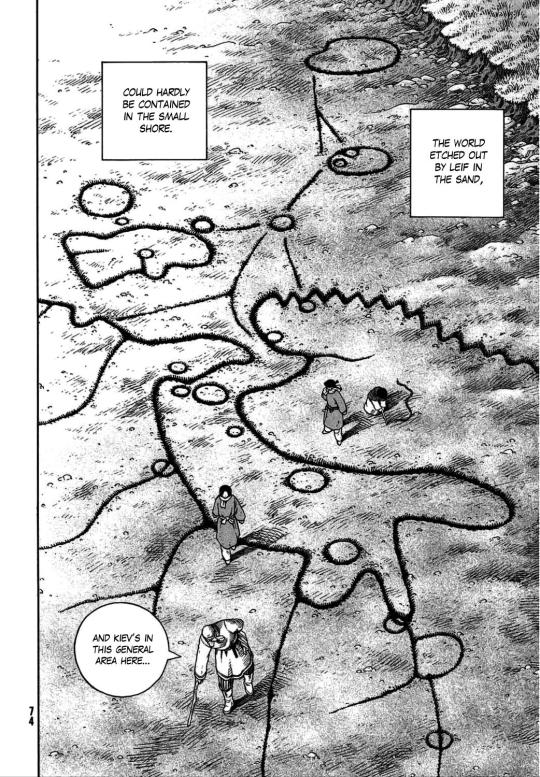
And it happens so that the years of the manga events (1019 in the recent chapters, possibly 1020 by the time characters would reach Kænugarðr, provided they ever will, of course) match the first years of the reign of a person known to Norse peoples as konung Jarizleifr (also I believe he was called “the Lame” for indeed it seems he used to limp) as high ruler of Kijev (the stuff I read about when working on an old Cossack cosplay video, which wasn’t even related to the cosplay in the end =/).
Bascially about 50% of the name “Jarizleifr“ has no real meaning in Old Norse, since it’s just an adaptation of a Slavic name Yaroslav (from Proto-Slavic *jarъ- “furious/fierce” and *slava - “fame/glory”), with “lav” part of “slav” element broken separately and taken as “leif” or “leifr” which is Old Norse for “inhertior/heir” and of course can be seen in the name of Leifr Eiríksson who is both a historical character and one of the major characters in the manga.
But, anyway, returning to the historical events which will possibly be covered in manga - the ruler of Kænugarðr in the years the manga events cover was prince Yaroslav the Wise, who himself was a descendant of Rurik and whose wife (whom he married in... 1019) was Princess Ingegerd of Sweden, daughter of king Olaf of Sweden.
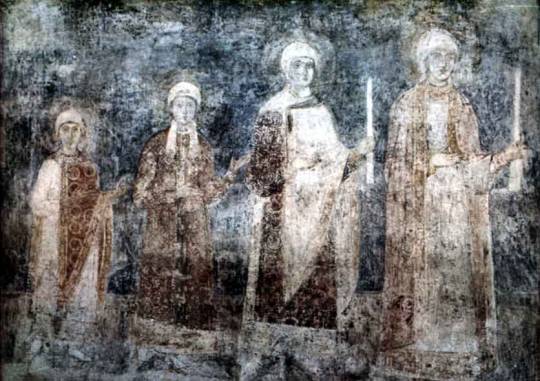

And Yaroslav’s way to power as ruler of Kijev was marked by a struggle for power against his brother Sviatopolk and foreign invasions (like of Poles under Bolesław I Chrobry (the Brave) who supported Yaroslav’s rival Sviatopolk) in 1018, with Yaroslav finally winning the throne against his brother in... 1019.
Although Yaroslav’s victory was only followed by a conflict against own nephew Bryachislav, whom he fought and defeated in 1020.
And these historical events are actually covered in Norse sagas (well, more correctly in þættir - sort of “short sagas”) namely the story of Eymundr, which tells of a Norse konung Eymundr who, not willing to fight against king St. Olaf II Haraldsson of Norway (as Olaf began joining Norðvegr under his own rule) and hearing the news of power struggle among brother-princes in Garðaríki following the death of konung Valdemarr (prince Vladimir), leaves his homeland together with his friend jarl Ragnarr and their men (whom include not only Norwegians but also Icelanders) to offer their services as mercenaries to Jarizleifr or whoever will treat them better.
Well, since it’s a Norse story, it’s somewhat hard to say how much does it exaggerate things when it tells about greedy local ruler who can’t handle anything by himself without his wise Norse wife and is several times saved by mercenary Norsemen who aid him in war against his relatives and give him wise counsel, whom he however tries to trick in times of peace when he thinks he doesn’t need them already.
And eventually (although after defeating one of the “three brothers” - Burizleifr, whose name is likely derived from the name of the Polish Duke Bolesław who supported and gave army to the actual brother Sviatopolk) Eymundr and Ragnrarr leave Jarizleif to serve “third brother” Vartilafr (likely rather nephew Bryachislav whose name likely has the very same origin as such names as Wrocisław or Vratislav in other Slavic languages) and when the two armies confront each other Eymundr manages to negotiate peace between “brothers” with Ingegerd, Jarizleif’s wife. And subsequently Eymundr got lands for himself becoming a “guardian” of the local state and it’s also said that together with Ingegerd they used to solve all the serious problems in Garðaríki .
So, returning to manga, Garðaríki wouldn’t really be that much of a foreign place to the heroes of Vinland Saga (well foreign, but with lots of their kinsmen involved, and I believe the inhabitants of Kijev were called “Danes” in some Western European sources at that age, apparently because the ruling dynasty there was of Norse origin), and there was really lot of interesting stuff going on historically (and described in þættir) involving Norsemen (and particularly Icelanders) in the very same years the manga covers, and that only in that one spot of the route which the heroes, it seems, are going to take.
And I guess it would be strange if it’s not going to be covered in the manga.
So, escaping the power struggle for throne of Denmark and power struggle within the Jomsvikings, the characters might arrive to Garðaríki to get involved in power struggle there, and who knows, maybe it will be the pacifist Þorfinnr Karlsefni of the manga who will negotiate peace between rival parties of Garðaríki conflict in 1019/1020 ?
Another dimension is that Garðaríki had already adopted Christianity, but from Byzantine Empire, and although Leifr is Christian also, he’s rather a Western Christian, while the events of manga take place just some decades before the
East–West Schism (which only finalized the process that had been going on for some time already), so it’s interesting if it’s going to be covered as well.
But anyway, it’s only one point of the possible route, and after Kænugarðr there are Dnieper thresholds to the south with Turkic nomadic peoples ambushing the traders and so on and so forth, all the way to Miklagarðr where Roman emperors had Varangian guard and, for example, one could find some Norse Runic writings on marble parapets mentioning some Norseman Halfdan....

So the historical period is quite exciting offering lots of opportunities to make some very interesting stories, even before finally “sending” the main characters to Vinland and I’m really looking forward to see if my guesses were right or not
#Vinland Saga#Vinland#Thorfinn#Leif#Garðaríki#Gardariki#Miklagarðr#Miklagard#Constantinople#Roman Empire#Vikings#Jarizleifr#Kiev#Kyiv#Kaenugard#Lore#Yaroslav the Wise#Eymund#Ragnarr#Ragnar#Saga
47 notes
·
View notes
Text
Karlemon’s Lands: The Kingdom of Fallsund

Fallsund is a land of marshes and fens on the coast of the Osirian Sea, a small monarchy ruled by King Varmod I Ingvildsson of House Ingvild. Often plagued by monsters and impenetrable mists, it is however a stable and fairly peaceful kingdom, where a man or woman may win prestige through the integrity of their honour or the strength of their sword-arm. The four large cities are ruled by the eorls and the three townships by the theyns, all of which are sworn to House Ingvild, which rules from the Blackmoor Palace in Sonderhavn.
Population: circa 2 million (84% human, 8% dwarf, 4% halfling, 2% elf, 1% goliath, 1% half-orc)
Capital City: Sonderhavn (ruled by House Asmund)
Other cities: Gjofjord (ruled by House Arnvi), Svalbeldon (ruled by House Vikar) and Vestenmark (ruled by House Bjornulf)
Major Townships: Tornesken (House Gudrod), Eyjarstrond (House Styr) and Atleyhavn (House Gylfyr)
Religion: Lydian Polytheism (90%), Dwarven Polytheism (4%), Church of the Four Virtues (3%), other religions (3%).
***
Fallsund’s history begins with tribal settlers along the banks of the river Ravning moving eastwards from modern-day Cosima and Valarre, followed by successive groups who crossed the Milesians in the south-west of the country.
The difficult terrain of the Ungyrgatal wetlands that cover most of the area of Fallsund encouraged an adaptable and durable temperament amongst the early peoples of the country, which was declared a kingdom in 434 EE by King Ivar I Sigfridsson, supposedly the last of the tribal Vendelgar kings and founder of that dynasty.
The Vendelgars ruled from the great fortress of Tsolgurgard for nearly six centuries before the city was destroyed overnight by a great fire in 260 CE, rumoured to have been started by the jealous seneschal Harald Hewardsson, later called Harald I of House Haraldsson. The Haraldsson dynasty ruled for a further four centuries, much of it marred by bitter infighting between princes and princesses of the throne.
The end of the Haraldssons came at the Battle of Gjofjord in 701 CE during the War of Tears, where the royal host under Waltheof I Haraldsson was routed by the elvish army and specifically the Iskander Guard under Patrician Esgalben of Cynelondin. During the war the country was occupied and effectively governed by the elvish military before it was driven out by the army of Audhilda Wall-walker, Ardha of Riverhold following the Siege of Vestenmark in 706 CE.
From 706 CE onwards, the throne of Fallsund defaulted into the hands of the eorls and theyns, who according to Vendelgar tradition elected Osvald Ingvildsson, a freeman and ealdorman of the city of Sonderhavn to the kingship as Osvald I of House Ingvild. Fallsund has prospered under House Ingvild over the past six centuries and is currently experiencing something of a cultural renaissance under King Varmod I and Queen Aulda Flaxen-hair.
***
The Royal Family of Fallsund
King Varmod I Ingvildsson of House Ingvild. Son of Bersi II and Ormhildr Erlingdottir. Age: 52.
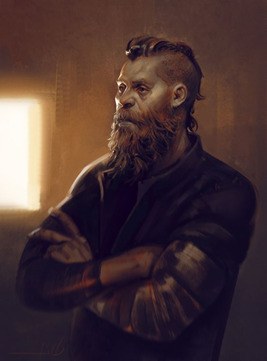
Queen Aulda Asmundottir of House Ingvild. Daughter of Olaf and Astrid. Age: 46. Known as Flaxen-hair according to Vendelgar tradition and titled Defender of the Faith for her charitable works in aiding the Lydian temples.

Alfdis Ingvildottir of House Ingvild. Crown Princess of Fallsund. Age: 23.

Lodin Ingvildsson of House Ingvild. Prince of Fallsund. Age: 21.

***
Eorls and Theyns of Fallsund
Solmund Vikarsson. Eorl of Svalbeldon. Age: 65. Known as 'The Seidr of Svalbeldon'. An advisor to the crown, a veteran of the court of King Bersi II and the Outlaw War.
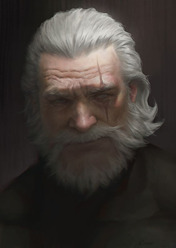
Ingithora Arnvidottir. Eorl of Gjofjord. Age: 26. A skilled sailor and vigilant defender of Fallsund's northern coastline, pilot of the longship ‘Seawolf’.

Siegest Bjornulfsson. Eorl of Vestenmark. Age: 58. A cunning businessman and owner of the Stonebreakers Exploration Mining Company.

Kol Gudrodsson of House Gudrod. Theyn of Tornesken. Age: 28.

Bjartmar Styrsson of House Styr. Theyn of Eyjarstrond. Age: 50.

Ragnhildr Gylfyrdottir of House Gylfyr. Theyn of Atleyhavn. Age: 39.
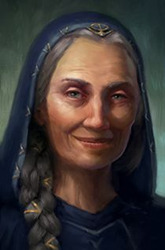
2 notes
·
View notes
Photo
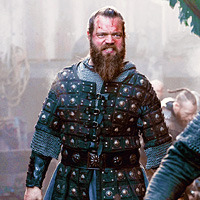
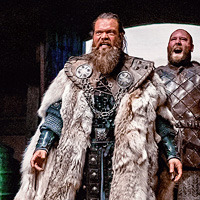

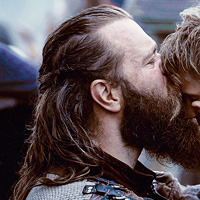


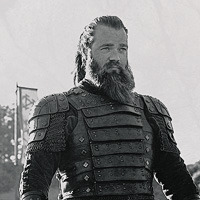

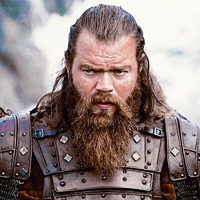
icons of Jóhannes Haukur Jóhannesson in Vikings: Valhalla (s1-2) as Jarl Olaf Haraldsson
#johannes haukur johannesson icons#vikingsedit#vikingsvalhallaedit#period fc#johanneshaukurjohannessonedit#jarl olaf#olaf haraldsson#olaf ii of norway#johannes haukur johannesson#vikings valhalla#rp icons#icons#rpg resource#*icons#*mine
14 notes
·
View notes
Photo










List of the kings of Norway (I).
#don't claim any of those gifs#found on internet#gifs not mine#only edited some for knowledge purpose#kings of norway#harald i fairhair#eric bloodaxe#eric haraldsson#haakon i#harald ii#harald bluetooth#haakon sigurdsson#olaf i#sweyn forkbeard#eric haakonson#fancast
6 notes
·
View notes